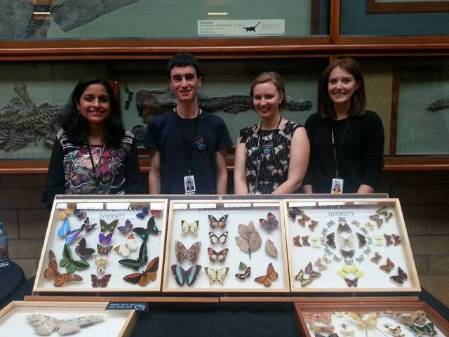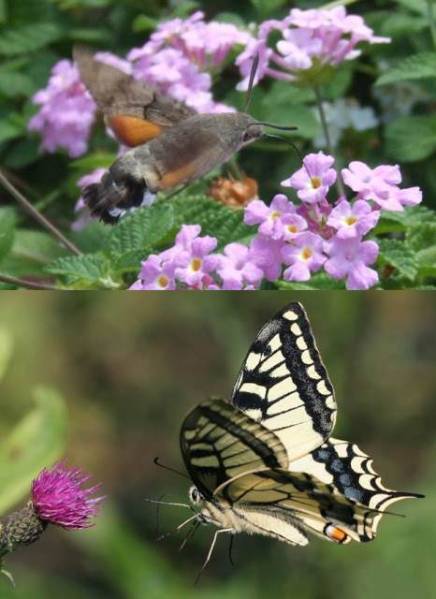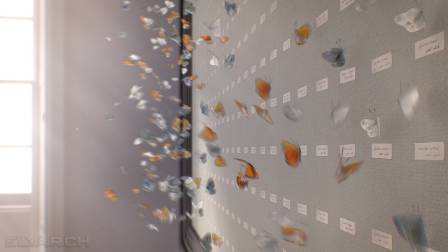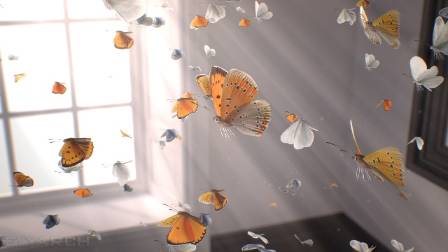With the forthcoming opening of our Sensational Butterflies exhibition in April, and the digitisation of our collections progressing gradually and efficiently, I thought it would be welcoming and encouraging to post a 3D art video on butterflies.
The video, titled “Gone?”, was made by Graham Macfarlane and Elitsa Dimitrova of Elyarch, a small but well-established and creative digital company, based in London.
I met Graham and Elitsa during the last Science Uncovered evening at the Museum in September, when they approached the Lepidoptera forest station to admire our displays and to chat about flight in Lepidoptera. They were particularly curious to know how butterflies and moths hold their legs during flight.
The Lepidoptera display during last year's Science Uncovered.
How do lepidopterans hold their legs while flying?
Top Hummingbird hawk-moth (Macroglossum stellatarum) © Alessandro Giusti;
bottom Swallotail (Papilio machaon)© Lukas Jonaitis
“Difficult question!” I replied with a pondering smile. As a matter of fact I don’t think I had given the topic much consideration before then.
A few days later, after talking with some colleagues and having done a little research on the subject, I sent Graham and Elitsa an email saying that probably, in insects, the position of the legs during flight differs slightly according to groups.
Presumably, as in other insects, lepidopterans' legs hang more or less down under the body, and very likely their position changes according to the particular moment of flight, ie migration versus flying while feeding or moving short distances, or during courtships etc, and I suggested to look at images and slow motion videos of flying insects on the internet.
A few weeks later they sent me the art video with thanks for the information I supplied, so I thought I'd share the video with you in case you haven’t seen it yet.
I really enjoyed the video; it's well-designed and captivating, even if the legs of the flying butterflies are probably not portrayed 100% correctly.
But let’s give the artists the benefit of poetic licence, and it shouldn’t matter after all, as long as the work entertains and stirs something in the viewer. Which I think “Gone?” does.
I like how the butterflies are taking off from an immobile position, as if they are all dormant inside a collection box, and a kind of imperceptible and secretive command suddenly wakes them up.
This makes me think of our collections, and how the digitisation projects currently taking place in our Museum are a sort of revival of our specimens and of all the useful data associated with them. A virtual awakening which makes our specimens more accessible.
But what I like most about the video is that it carries a nice message of hope, and it’s not just about butterflies, but also about any other organism we share our planet with: it’s an invitation for us all to reflect on the beauty, complexity and fragility of the natural world, and the responsibility each of us has to preserve it. A philosophy that is ingrained in the values of the Natural History Museum, as we have always aspired to promote the discovery, understanding, responsible use and enjoyment of the natural world.
The vivid beams of light shining on the gliding butterflies and the shimmer created by the dislodged tiny scales of their wings give a wonderful sense of hope and awakening.






